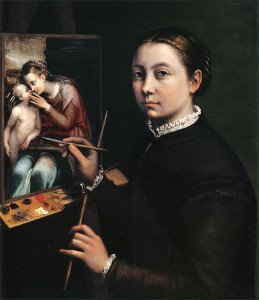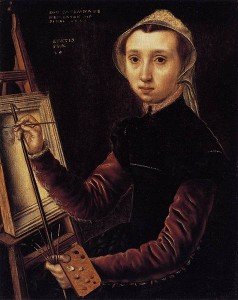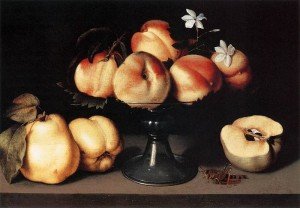Three Influential Female Artists Of The Renaissance That You’ve Probably Never Heard Of
Think about some of the most well known artists of the Renaissance – Michelangelo, Donatello, Leonardo da Vinci, Caravaggio, Raphael, Botticelli, Titian…do you see a common theme here? They’re all men.
I was reading an article about Michelangelo the other day and was struck by the fact that every Renaissance artist I could name off the top of my head was male. Admittedly, my knowledge of art history is pretty weak, but I couldn’t come up with the name of a single female artist from that time period. I knew that women had to have worked in the arts in some form or another, so I decided to dig around a bit and see what I could learn about female artists of the Renaissance.
One of the first things I discovered is that there were quite a few barriers to becoming an artist if you were a woman living during that time period. Aspiring artists learned by dissecting cadavers and studying the bodies of naked men, two activities that weren’t considered appropriate for women. Additionally, young artists of the Renaissance developed their skills by working as an apprentice to a master artist. This involved living with the artist for a number of years – an arrangement which was not practical for most young women.
Because of these factors, the majority of women who became artists during the Renaissance were either the daughters of well-respected artists, or had uncles or other close family members working in the arts.
I’ve listed three female artists of the Renaissance below, all of whom significantly impacted the art world in their own unique way.
Sofonisba Anguissola

Sofonisba Anguissola, an Italian Renaissance painter, was instrumental in breaking down some of the art education barriers for women. Through her fine art training and apprenticeship, she set a new standard that made it acceptable for women to become art students.
In her early 20s she traveled to Rome, where she met Michelangelo. Upon viewing her work, Michelangelo could immediately see that she had talent. He began offering her informal training, which she thought of as a great honor.
She became a well-established painter, and was eventually hired as an art tutor for Elizabeth of Valois, the Queen of Spain. Later, she became an official painter for the Spanish court, which required her to alter her style to fit the more formal nature of her new position.
After the queen’s death, Anguissola married Don Francisco de Moncada. The two lived together until her his death in 1579. Not long after, she married again, this time to Orazio Lomellino, the captain of the ship that was taking her home.
She continued to paint with the full support of her new husband until her vision weakened, at which time she became a wealthy patron of the arts. She lived until the ripe old age of 93.
Caterina van Hemessen

Caterina van Hemessen, a Flemish painter who lived during the mid-1500s, was most likely trained as an artist by her father, Jan Sanders van Hemessen.
She is credited with being the first painter to paint a self portrait that depicts an artist sitting at their easel.
Her existing paintings are also the earliest verifiable work by a female Flemish painter.
Although she lived until 1587, the latest of her pieces still in existence was created in 1554.This is the same year that she was married, which has prompted many historians to speculate that she stopped painting after her marriage.
Click to view more of her paintings
Fede Galizia

Fede Galizia, an Italian Renaissance painter, is best remembered for her revolutionary still life paintings. Her art training came from her father, Nunzio Galizia, who was a painter of miniatures.
By the tender age of 12, Fede Galizia was already developing a reputation as a dedicated artist. As she grew older, she became highly sought after as a portrait artist. Her work showed incredible attention to detail – a trait that is often attributed to her father’s influence as a miniaturist.
Although Galizia’s portraits and alter pieces were exceptionally well done, her still life paintings are considered to be her most important work. Her style of painting was revolutionary compared to that of her peers.
Unlike her contemporaries who used elaborate compositions, her paintings were simple and uncluttered. They almost always consisted of a single type of fruit in a bowl or basket, with several other pieces of fruit scattered nearby on the table.
She is considered to be a pioneer of this style of painting, and her influence can be seen in countless other still life paintings created by other artists over the years.
The detail of the painting at the top of this blog post, Judith with the Head of Holofernes, was painted in 1596 by Fede Galizia. It is generally believed that the figure of Judith is a self portrait of Galizia.
